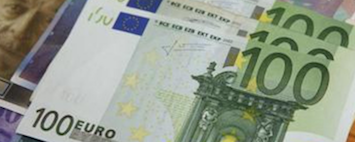Global company dividends rose to a record $568.1 billion in the second quarter of 2023, up 4.9% on a headline basis, with European firms leading the payouts to shareholders.
Switzerland, France and Germany all saw record dividends paid out by their companies.
That’s according to the latest Janus Henderson Global Dividend Index report.
“Underlying growth of 6.3%, once lower special dividends were excluded, marked an acceleration compared to the first quarter and reflected the seasonal dominance of Europe during the second quarter,” said the report.
Globally, 88% of companies either increased dividends or held them steady in Q2.
Europe (ex-UK) pays out two thirds of its dividends in the second quarter — and Europe’s Q2 10% underlying growth exceeded the global average, with dividends jumping to a record $184.5 billion.
Every other region in the world saw slower dividend growth than Europe in Q2, while emerging markets saw payouts fall due to cuts from Latin American oil producers.
Banks contributed half the world’s dividend growth in Q2, up 19.7% year-on-year to a record $85.3 billion.
Janus Henderson said it expects global company dividend growth of 5.2% on a headline basis to $1.64 trillion for full-year 2023.
For Q2, the Janus Henderson report said: “European payouts rose by a tenth year-on-year (+9.7% headline, +10.0% underlying), reflecting strong profitability in the 2022 financial year, with most European companies making their customary single annual payment.
“Much higher banking dividends were the most important driver of European growth, followed by vehicle manufacturers.
“Indeed, banks accounted for half the global growth in Q2 as rising interest rates boosted margins and pandemic-related disruption to dividend payments finally worked its way out of the numbers.
“The pattern was evident all over the world with few exceptions.
“For example, in the UK total payouts were resilient in the face of lower mining dividends as HSBC returned to quarterly payments at a much higher level than seemed possible even a few months ago, while in Singapore, banks propelled the total paid to record levels …
“Paris hosts Europe’s largest stock market and its companies pay the largest share of the region’s dividends, equivalent to a quarter of the total each year.
“Payouts rose 10.3% on an underlying basis, taking French dividends to a record $53.9bn (€49.5bn) in the second quarter.
“Engie, the utility company, was the biggest contributor to growth, raising its dividend by two thirds as profits boomed on the back of high energy prices.
“Across the wider market there was a strong contribution from consumer, healthcare and financials. With the exception of EDF, which cancelled its final dividend ahead of its recent nationalisation, no French company in our index made a cut …
“German dividends rose 9.2% on an underlying basis to a record $44.7bn (€40.8bn). BMW has overtaken Allianz to become Germany’s second biggest payer after rival Mercedes-Benz, paying more than double its pre-pandemic dividend on the back of strong profit growth.
“Along with many car manufacturers, BMW has been able to increase car prices and has also improved its sales mix towards higher value vehicles.
“Just under nine-tenths of German companies in our index increased dividends or held them steady but there were some notable cutters.
“For example, Vonovia, the debt-financed property company, halved its dividend to protect its capital position, while Adidas cut by almost 80% as profits fell following the end of its collaboration with Kanye West …
“Swiss payouts rose 4.7% on an underlying basis.
“Record profits at transport group Kuhne & Nagel followed the trend for shipping companies elsewhere and meant a 40% boost in the dividend, making the company the biggest contributor to Swiss growth. Swiss dividends reached a record $27.3bn (CHF24.7bn) …
“Headline dividends of $6.9bn (€6.4bn) fell in the Netherlands owing to lower one-off special payments and ASML’s shift to quarterly payments, but the underlying trend remained positive, up 4.3% year-on- year. Growth was lower than the European average thanks to a cut from ING Groep, which saw lower profits on the back of higher bad debt provisions …”
